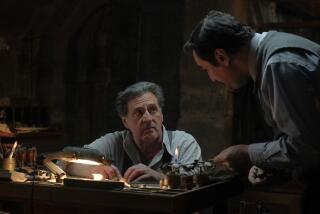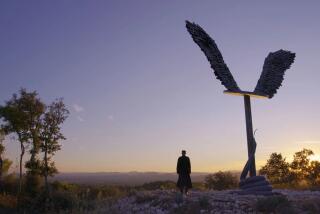A world-altering moment, however fleeting, at the Berlin Wall
Dawn light had just begun to wash over the gritty outskirts of East Berlin as the overnight train from Warsaw approached the station.
The communist-ruled side of the Berlin Wall was mostly a no-man’s land of barbed wire and booby-trapped “death strips” beyond crumbling apartments and streets usually devoid of cars and pedestrians.
But on this Saturday morning a quarter of a century ago, little more than a day after East German border guards gave way to tens of thousands of East Berliners demanding to cross into West Berlin, a churning sea of humanity could be seen from the elevated track heading into the Friedrichstrasse station.
Sputtering, smoke-spewing Trabants — the fiberglass-bodied East German sedans that ran on engines with the horsepower of lawn mowers — squeezed through the throngs of pedestrians slack-jawed with wonder at their first glimpse of the West.
West Berliners lined the narrow asphalt corridor through which more than a million had already flowed in 36 hours. They threw flowers and deutschemarks and handed paper cups of champagne through open windows to the new arrivals. Faces on both sides were wet with tears of joy, shock and a bit of fear that their unexpected freedom could evaporate any second.
The gantlet of jubilant welcomers reached out to caress the “Trabis,” stroking the hoods to assure themselves that it wasn’t an illusion. They patted the roofs of the cars inching through the crossing, silently conveying what their choked voices couldn’t get out: “Good job!” “Welcome!” “Now we are one again.”
West German merchants tossed newspapers, hats, ice cream and coin purses at the surging crowd, the latter to hold the 200 deutschemarks to which any East German had long been entitled upon arrival to the West side for a visit. It was called Begruessungsgeld — welcome money — a sum worth about $106 at the time, a windfall for the East Germans, whose currency was worthless in the West and the catalyst for an orgy of capitalist indulgence by the throngs who besieged West Berlin’s retail mecca.
The KaDeWe department store in the heart of West Berlin, with its designer boutiques and gourmet food counters, was packed from morning to night, its hours extended in what was then a rare suspension of the West’s strict shopping-time law.
Some visitors used their welcome money to buy products difficult to find in the economic wasteland of the East: smoked meats, toiletries, lingerie, chocolates. Others husbanded their deutschemarks like farmers girding against unforeseen misfortune.
Those who weren’t shopping were celebrating on both sides of the tumbling wall. Crowds that had formed at crossing points where East German guards were still making perfunctory document checks grew impatient, giving each other boosts with interlaced fingers up and over the 10-foot-high structure.
They straddled the wall as if on horseback, singing peace songs, cradling champagne bottles and dancing as if on an enemy’s grave. They took crowbars to the graffiti-covered panels on the West side and used sledgehammers and baseball bats to smash out enough concrete between the inner rebar to pry open ever more breaches. The crowds from both sides cheered each new indignity inflicted on the hated symbol.
It was a sight as emotionally wrenching for thick-skinned journalists inured to the world’s injustices as it was for the Germans. I wept from the minute I stepped into the maelstrom of new arrivals outside Checkpoint Charlie, struggling to compose myself enough to interview the revelers, who were as at a loss for words as I was.
The street party lasted through Sunday night, drawing as many as 4 million people — 1 of 4 East Germans — over four tumultuous days.
It was a moment in history immediately recognizable as world-altering. I was 34, had just moved to Bonn a year earlier after five years as an Associated Press correspondent in Moscow. In the Soviet Union, even after the rise to power of Mikhail Gorbachev, the strictures of repression had seemed so insurmountable as to forever preclude the euphoric scene I was witnessing.
I arrived later to the party than many colleagues based in West Germany as I had left for Poland a few days earlier to cover a visit by West German Chancellor Helmut Kohl. Like most of the German population, Kohl had no inkling of the events that would unfold in his absence. But unlike me, he had a government plane at his disposal to fly back when the stunning news broke.
I scrambled to secure a plane or train ticket to Berlin, an all-day undertaking in the Polish capital still in the grip of Soviet-style bureaucracy. I boarded a train late Friday, nervous that I had already missed too much of the historic events.
But the ecstasy was in full swing when I arrived after a sleepless night. Hundreds of thousands milled around West Berlin to watch the world being turned on its head.
At the time, nothing seemed impossible. The threat of nuclear war, the muzzling of dissent, the plight of the millions living behind the Iron Curtain seemed to have vanished, at least for those few heady days in November.
It began to unravel soon enough, when talk of German reunification began gaining ground. The Westerners groused about what it would cost them. The Easterners resented being regarded as burdens. Although reunification would come just 11 months later, it was a newly divisive pressure on the merged populations. The atmosphere of elation over the wall’s fall had disappeared by Christmas.
But for one uplifting, heart-wrenching, watershed weekend, Berlin reveled in the long-elusive and short-lived nirvana of “Europe whole and free.”
Williams reported this story in Berlin in 1989 and wrote it recently in Los Angeles.
More to Read
Start your day right
Sign up for Essential California for news, features and recommendations from the L.A. Times and beyond in your inbox six days a week.
You may occasionally receive promotional content from the Los Angeles Times.







